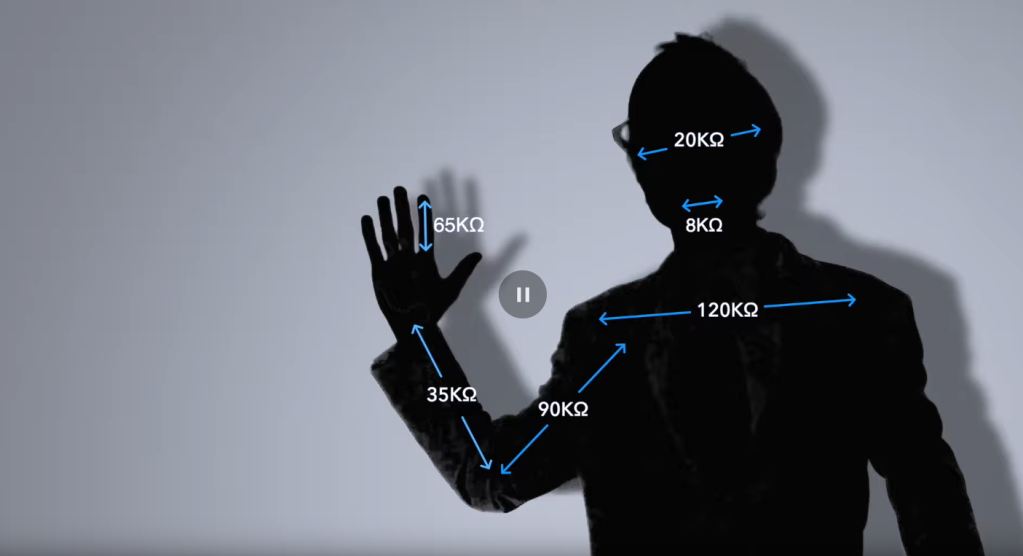Each part of your body – tongue, finger, arm – has its own electrical resistance. Our friend Collin Cunningham puts this to use, and then turns all of that into musical instrument controller.
Watch the latest Collin’s Lab video, recently released to the video channel of electronics and electronics education purveyor Adafruit Industries:
I love that this is minus any narration, but that also means it’s not accessible to anyone without perfect vision, so let’s walk through it a little. It’s pretty simple. The ingredients:
- Sew-on metal snaps, as used in garments. I see a lot of brass ones around; I think those will work.
- Bandage tape (for attaching them), into which Collin has cut small holes with a hobby knife (“nexcare absolute waterproof tape”!)
- Iodine-free table salt (his comes from the Red Cross, but I believe any kosher salt is also iodine-free)
- Water. (Collin dissolves some salt in the water – you can eyeball this).
Apply the salt water underneath the cap and secure with the bandage for a good conductive connection to your skin. Alligator clips and hook-up wire are enough to make the connection work.
Your body really does work in measures of resistance as in a circuit – Collin measures 65 KΩ across the index finger, and 120 KΩ shoulder to shoulder.
Collin uses a pretty powerful processor to do something with that input voltage – like, definitely overkill, but overkill comes cheap these days. Adafruit’s own Feather M4 Express with a beefy processor inside costs just US$22.95, which is less than what I used to spend on a way more simplistic Arduino. But any microprocessor would work. I do want one – and apparently so did everyone else, as they’re sold out at the moment they’re back in stock:
Adafruit Feather M4 Express – Featuring ATSAMD51 – ATSAMD51 Cortex M4
He codes something to send out MIDI, which this board and dev environment do via built-in library. Make contact to complete the circuit, translate varying voltages into pitch. (That’s the sound at the end of the video.)

Whew. I realize that actually writing things down does require that you be more precise. I’ll ask Collin if he wants to share more details and code. But it’s a nifty trick, and it could be applied to other ideas and interfaces.
Using physical presence in electronic musical instruments isn’t just a science fair experiment – it’s the reason we’re all here. Leon Theremin did that by using the body’s proximity to two antennas as control for the instrument that bore his name. It’s a good reminder that even as the computer performs a parlor trick that makes us imagine a virtual or digital world and a real one, all electronics operate in the real world. (Maybe we’d be more responsible about the materials we source for them if we kept that in mind, in fact.)
Electronics is not some mysterious fairie realm; our bodies exist in the physical world, too. Well, mostly – do enough back-to-back Zoom calls and I guarantee you become part human, part ghost.
More where this came from…
There is a ton of activity over on the Adafruit blog these days:
— and previous installments of Collin’s Lab floating around, though it’s been a while.
It’s great to see Collin again. A little history – Collin (and Adafruit founder Limor Fried) were the first co-organizers and participants in what was called Musicmakers / Handmade Music / sometimes it didn’t entirely have a name when I was doing that in New York starting around 2007. He’s a terrific and inventive engineer and musician. Hope everyone there is hanging on and doing well, and if the commercial heart of New York wants to up and relocate somewhere else or distance work and just leave the city with its cool nerds, artists, and essential workers, I gotta same I’m okay with that.